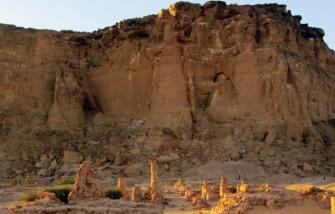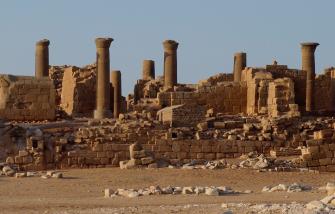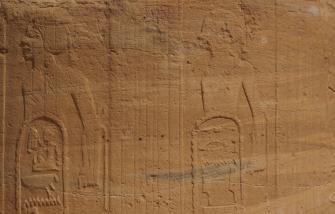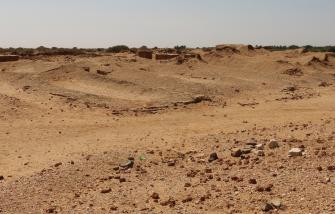Dangeil is situated just upstream of the Fifth Cataract, 320 kilometres north of Khartoum. It is the site of an urban settlement of the Meroitic period. Its most important monument is a temple of Amun built in the 1st century AD. Read more ...
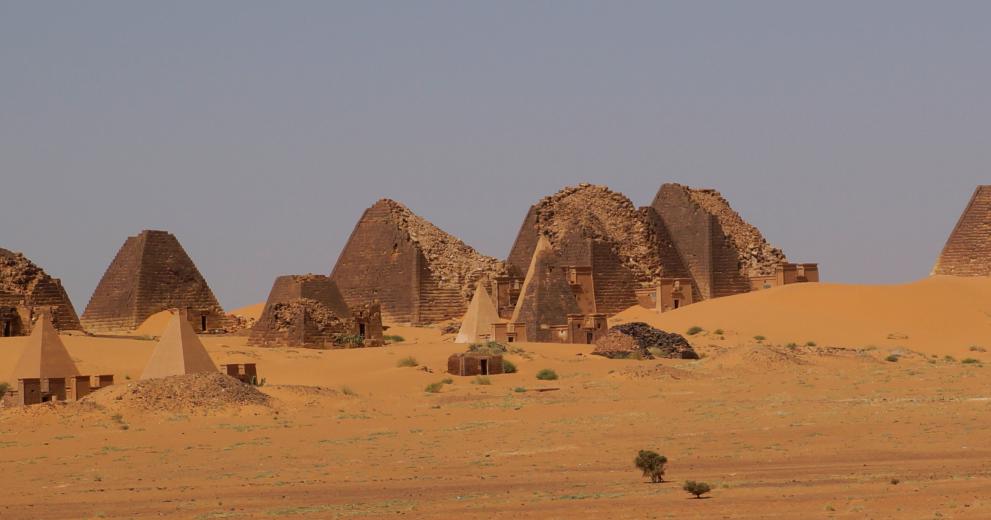
300 BC to 350 AD
Meroitic period
About 300 BC, the Kushite rulers moved the royal cemetery from the area of Napata to Meroe, a step which was defined as the onset of the Meroitic period in retrospect. It signals a more profound shift in the political and religious focus from the northern to the southern part of the country.
Simultaneously, the role of Egyptian elements in elite representation decreased. New social, cultural and artistic expressions appeared and are often interpreted as an increasing 'African' influence. For example, the use of Hieroglyphic Egyptian for royal inscriptions ended and the Meroitic script, used to write the indigenous Meroitic language, was introduced. Indigenous gods, like the lion god Apedemak, augmented the pantheon which had previously been dominated by Egyptian deities.
Arts and crafts flourished. Meroe became a centre of iron production. The saqia waterwheel was introduced, making agriculture more efficient. The hinterlands east of the Nile were colonised with cult centres like Musawwarat and Naga, probably in an effort to more closely integrate their nomadic populations into the Kushite state and siphon off their livestock production.
Relations with Graeco-Roman Egypt were generally peaceful and based around trade. However, Rome's conquest of Egypt in 30 BC led to border skirmishes. In 23 BC, the Roman governor of Egypt advanced south to end the Meroitic raids. He pillaged the northern part of the Meroitic Nile valley and sacked Napata before returning home. The Meroites sent envoys to Augustus, who was then on Samos, and in 21/20 BC a peace treaty was concluded between Rome and Meroe. The Romans established a military border zone, the so-called Dodekashoinos, south of Aswan, placing the actual frontier at Hiera Sycaminos (Maharraqa) in Lower Nubia. This arrangement lasted until the end of the third century AD.
The Kingdom of Kush began to fade as a power by the second century AD. A number of factors contributed to its downfall – rivalry with the powerful state of Axum to the south, the decline in trade with the weakened Roman Empire to the north, raids by nomadic desert tribes and the over-exploitation of resources, particularly the non-sustainable use of wood connected with iron production in the savannah regions of the Meroitic heartland. About 350 AD, the last royal tombs were constructed at the cemetery in Meroe, signalling the end of the dynasty and the onset of a new chapter in the history of the Middle Niley valley.

